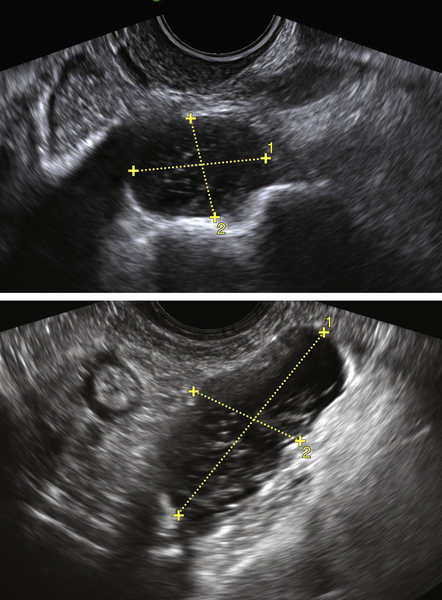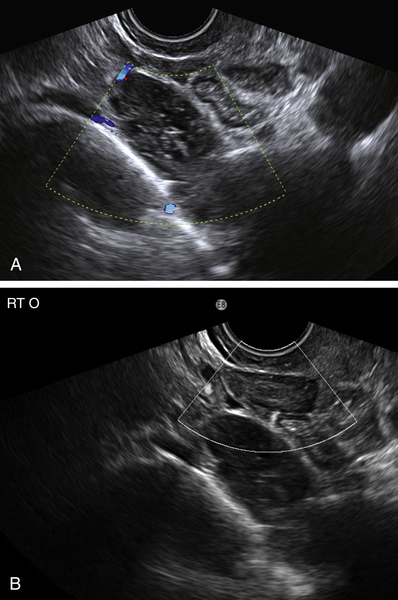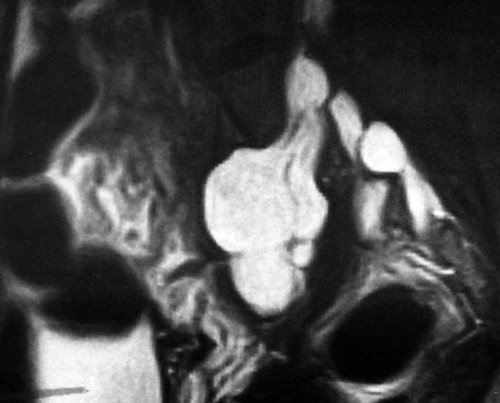Tarlov Cysts
Synonyms/Description
Etiology
Ultrasound Findings
Differential Diagnosis
Clinical Aspects and Recommendations
Figures
Suggested Reading
H’ng M.W., Wanigasiri U.I., Ong C.L. Perineural (Tarlov) cysts mimicking adnexal masses: a report of three cases. Ultrasound Obstet Gynecol. 2009;34:230–233.
McClure M.J., Atri M., Haider M.A., Murphy J. Perineural cysts presenting as complex adnexal cystic masses on transvaginal sonography. AJR Am J Roentgenol. 2001;177:1313–1318.
Mummaneni P.V., Pitts L.H., McCormack B.M., Corroo J.M., Weinstein P.R. Microsurgical treatment of symptomatic sacral Tarlov cysts. Neurosurgery. 2000;47:74–78.
Raza S., Klapholz H., Benacerraf B.R. Tarlov cysts: a cause of bilateral adnexal masses on pelvic sonography. J Ultrasound Med. 1994;13:803–805.










